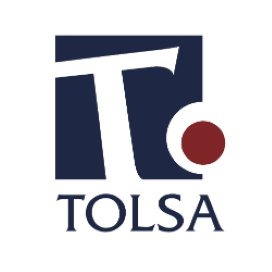A natural solution against mycotoxins

Recent studies carried out to determine the effectiveness of a mycotoxin binder from Tolsa have shown it to be a safe and natural alternative solution.
Mycotoxins are toxic secondary metabolites produced by moulds and fungi mainly from the genus Aspergillus and Fusarium present in grain. These naturally occur and are highly predominant globally in the field (pre-harvest) and grain storage (post-harvest).
The co-occurrence of mycotoxins is very common because the same fungi can produce different types of mycotoxins. Analysis have demonstrated more than one mycotoxin can be present in the grain at one time. Unfortunately, once mycotoxins are produced, they cannot be destroyed without significantly compromising the integrity of feed since they have a very high chemical and thermal stability and are able to survive the feed manufacturing process. Exposure to mycotoxins mainly occurs when livestock ingest grain contaminated with mycotoxins, these are absorbed into the blood stream and produce toxic effects at very low concentrations, ppm and ppb, known as mycotoxicosis.
Mycotoxins: Varying toxicities
Mycotoxicosis varies depending on the mycotoxin, it seriously affects animal health and performance and in some cases their metabolites accumulate in milk, eggs and meat, transferring from the feed to the food chain and posing a risk to human health. Aflatoxin B1 is the major aflatoxin produced and is considered the most toxic naturally occurring toxin. Aflatoxin M1 is a hydroxylated product of aflatoxin B1 from animal metabolism that accumulates in milk, having carcinogenic effects on human nutrition. Another mycotoxin to consider as one of the most relevant and toxic is deoxynivalenol (DON), which belongs to the trichothecene family. The high contamination of DON present in raw materials and feed affects worldwide, in addition to its known complexity to be binded.
Toxicities vary from mycotoxin to mycotoxin and include hepatotoxicity, genotoxicity, nephrotoxicity, neurotoxicity, reprotoxicity and immunotoxicity.
Symptoms vary depending on the mycotoxin, livestock species, age, environment, nutrition and health and mainly include:
- Reduced feed intake and nutrient utilisation
- Disruption of gut integrity
- Immune suppression
- Reduction of fertility
- Performance losses
- Cancer
All these lead to substantial economic losses on farm.
3 different actives, 1 solution
Tolsa’s new solution to mycotoxins present in feed is Atox Nature Silver. An innovative, proven and patented formulation following years of experience and research to develop a broad range mycotoxin binder for the poultry, swine and ruminant industries. The new formulation combines 3 different actives based on different physical and chemical properties to cover 3 clear objectives:
- Increase the range of mycotoxins adsorbed including less polar mycotoxins.
- Increase the specificity of binding to ensure it does not bind essential nutrients.
- Ensure the adsorption strength to avoid mycotoxin desorption does not occur in the gastrointestinal tract.
Each raw material in the formulation has been selected and tested to bind a broad range of mycotoxins. The formulation combines 3 active ingredients with a different absorption mode based on the lamellar morphology of bentonite, needle-like sepiolite and porous activated carbon. This allows to extend the range of possible interactions between the binder and the toxin, this being an important point due to the variability of the physicochemical behaviour of the mycotoxins.
In vitro studies: Experimental procedure
In vitro studies were carried out using high-performance liquid chromatography (HPLC) in the US lab TRILOGY, an industry reference with whom we work closely. The method consists in the simulation of the stomach at pH 3 (adsorption) and small intestine at pH 6.5 (desorption), according to the gastrointestinal tract of the animal. The remainder between them is the efficiency %.
Description of the method:
Adsorption tests are carried out at different pH (acid and basic). A buffer solution is prepared containing the mycotoxin to be studied. The product is added to this solution and it is incubated for 60 min at 37º C under permanent agitation. The samples are then centrifuged and finally the amount of mycotoxin present in the supernatant is analysed.
Results:
Figure 1 shows the breakdown of results obtained in vitro with all efficiencies higher than 90% for the mycotoxins analysed (FUM, OCRA, T2 and ZEA). The results were obtained measuring the sequestering capacity of 2 mg/kg of our new product against 2 ppm of concentration of each mycotoxin. These results show the efficiency of our new formulation not only in adsorbing the mycotoxin but also in maintaining that bond strength and preventing the possible desorption of the mycotoxin at varying pHs in the gastrointestinal tract.
In the case of Figure 2, the efficiency of a fixed amount of 3 mg / kg of our new product against various concentrations of deoxynivalenol was observed. The concentrations being 0.9; 1; 3 and 5 ppm. In the lowest concentrations (0.9 and 1), efficiency results were above 90%, while in the highest concentrations (3 and 5) the efficiency remained above 60%. Demonstrating the wide range of efficiency of Atox Nature Silver against mycotoxins including deoxynivalenol, one of the most difficult mycotoxins to sequester for being non polar.
The research and trials are focused on maximising adsorption and keeping it that way by minimising desorption. This way the bond between the mycotoxin and the binder remains stable through gastrointestinal tract with varying pH. The effectiveness of the formulation is measured by looking at binding efficiency, which takes into account maximising adsorption and minimising desorption. This way we ensure that your livestock are only absorbing essential nutrients into the blood stream, and not mycotoxins.
In vivo studies: Experimental procedure
Once the efficacy against a high range of mycotoxins has been proved, it was studied the safety and effect of our mycotoxin binder against the non-sequestration of other micronutrients such as vitamins, trace minerals, amino acids that are within a habitual ration of feed. The investigations were carried out on 2 species, piglets and beef cattle.
We carried out an in vivo test on piglets in 3 pig farms located in different parts of Spain. Feed samples were initially tested to check the degree of contamination of Aflatoxin B1 (AFB1), Zearalenone (ZEA) and Deoxynivalenol (DON). Results are showed in Table 1.
Since contamination levels are below the maximum allowed for AFB1 or recommended for ZEA and DON by the EU (Commission Recommendation 2006/576 / EC) there is no significant risk of mycotoxicosis. Therefore, feed and cereals were produced in accordance with EFSA directives.
In the experiment design, 60 piglets per farm, 30 control and 30 treatment were used. The experimental group receiving 0.2% of our new formulation. The control group did not receive any mycotoxin binder. The following productive performance parameters were analysed: Growth (BW), Average daily gain (ADG), conversion index (FCR) from 0 to 35 days. Figures 3, 4 and 5 show the results of the analysis. No significant differences were observed in any of the farms of the trial, concluding that the use of Atox Nature Silver is safe and does not produce the sequestering of any essential nutrient that affects the productive parameters. A lower conversion rate is observed in all three farms when using Tolsa’s newest mycotoxin binder.
On the other hand, an in vivo test (Table 2) carried out on a beef cattle farm located in Spain. Firstly, samples of feed and straw were analysed to check the degree of natural contamination by Fumonisin (FUM), Vomitoxin (DON) and Zearalenone (ZEA).
In the design of the experiment carried out in cattle where 2 treatments were studied, in which the control group consumed feed without mycotoxin binder and the treatment group consumed feed supplied with 30g/animal/day of the mycotoxin binder during a period of 1 month. Blood samples were taken at different times of the test and the levels of vitamins, minerals and amino acids were analysed. Figures 6 to 11 show the results.
Conclusion
No significant statistical differences were observed in any of the treatments in the trial, so we conclude that the use of Atox Nature Silver is safe and does not cause the sequestering of any essential nutrient that affects the usual productive parameters.
The studies carried out to date demonstrate the effectiveness of Atox Nature Silver in sequestering mycotoxins as well as ensuring their safety. It offers a natural, completely inorganic solution. Our patented mycotoxin binder allows the vitamins and minerals to act correctly, being a solution for both maintenance and shock doses.


